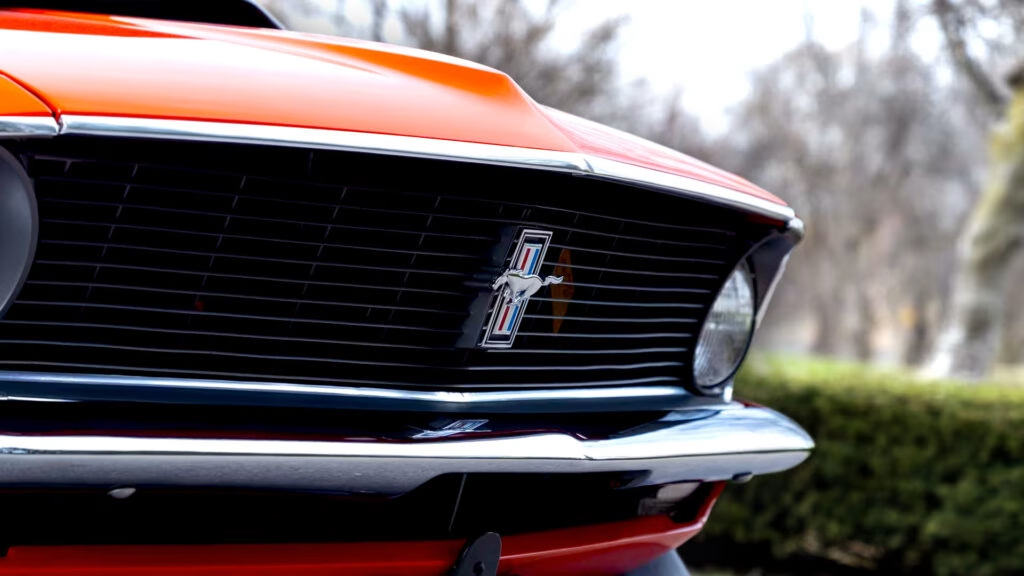A rare 1970 Ford Mustang Boss 429 recently made headlines by fetching an astonishing $627,000 at auction. This isn’t just any Mustang; it’s one of only 499 Boss 429s produced that year, and even more uniquely, it features a striking color combination that only 13 of its kind share. So, what makes this car so special, and why are collectors willing to pay such a premium?
The Boss 429 was born out of Ford’s fierce competition with Chrysler in the late 1960s, particularly in the NASCAR arena. Chrysler’s 426 Hemi engine had given them a significant edge, prompting Ford to create its own high-performance engine to level the playing field. Enter the 429 cubic inch (7.0-liter) V8, designed not just for power but to meet NASCAR’s homologation rules, which required a production version of the engine to be available in a street car.
Interestingly, instead of placing this powerful engine in the Fairlane or Torino models, which were more suited for racing, Ford made the bold decision to fit it into the Mustang. This was no simple task; the engine was too wide for the Mustang’s engine bay. To make it work, Ford enlisted Kar Kraft, a company that specialized in modifying vehicles for performance. They widened the engine bay, relocated the shock towers, and even moved the battery to the trunk to help balance the weight. The result? A car that was not only powerful but also a bit of a mechanical marvel.
When it comes to performance, the Boss 429 was rated at 375 horsepower, a figure that many believe was understated. Rumors suggested that both the Boss 429 and Chrysler’s Hemi were capable of producing around 500 horsepower in real-world conditions. This level of power, combined with the Mustang’s lightweight body, made for an exhilarating driving experience.
What’s particularly fascinating about the Boss 429 is its understated appearance. While it boasted a massive hood scoop and some discreet fender graphics, it didn’t scream for attention like some of its contemporaries. The Calypso Coral paint job on the auctioned model certainly helped it stand out, but in a world of flashy muscle cars, the Boss 429 had a stealthy charm.
The rarity of the Boss 429 contributes significantly to its value. With only 860 produced in 1969 and 499 in 1970, and given its unique color and interior combination, it’s no wonder collectors are willing to pay top dollar. The recent sale price of $627,000 far exceeds the Hagerty valuation of $386,000 for a concours-standard example, highlighting the car’s desirability among collectors. For comparison, a well-maintained Boss 302 from the same era, which was designed for racing in the Trans Am series, typically sells for around $200,000—less than a third of the Boss 429’s auction price.
So, what’s the takeaway from this remarkable auction? The Boss 429 isn’t just a car; it’s a piece of automotive history that encapsulates a unique moment in racing and manufacturing. Its blend of rarity, performance, and understated elegance makes it a coveted item for collectors. If you’re considering diving into the world of classic cars, remember that sometimes, the most valuable ones are those that tell a story—like the Boss 429, which was never intended for the racetrack but became a legend in its own right.
The big takeaway? Collecting isn’t about perfection—it’s about finding those unique pieces that resonate with you. Whether it’s a classic Mustang or another gem, start with one addition this week, and you’ll likely spot the difference in your collection by month’s end.

